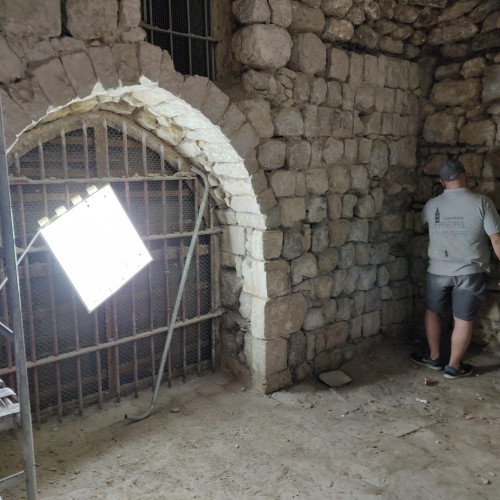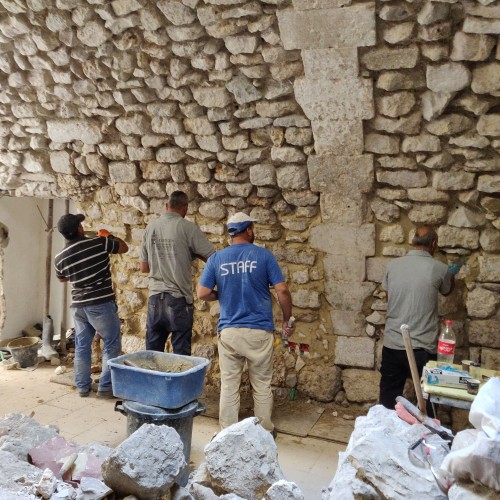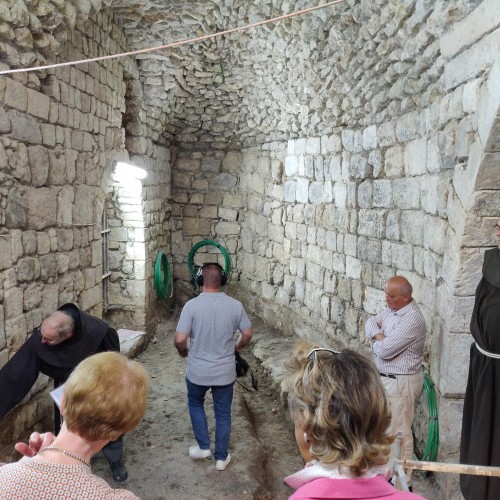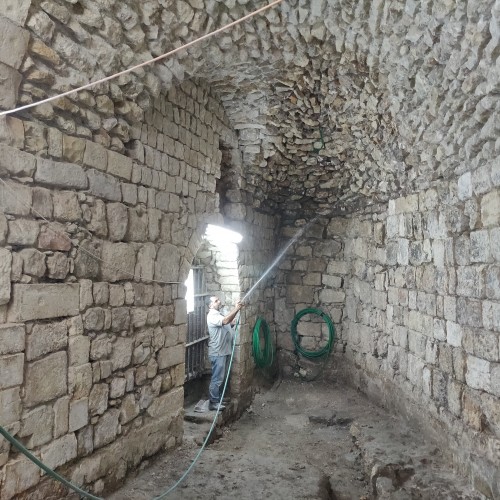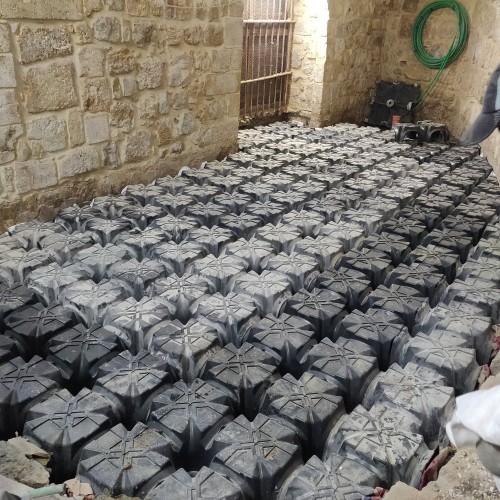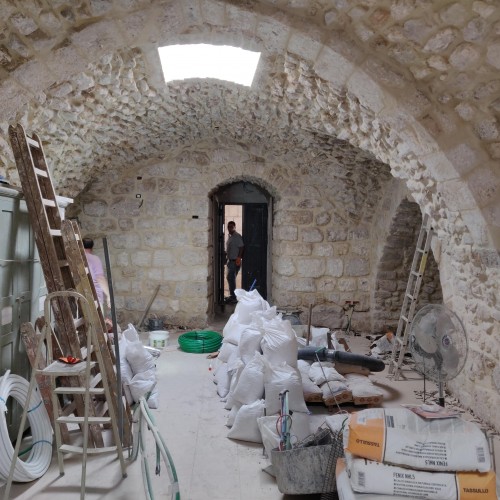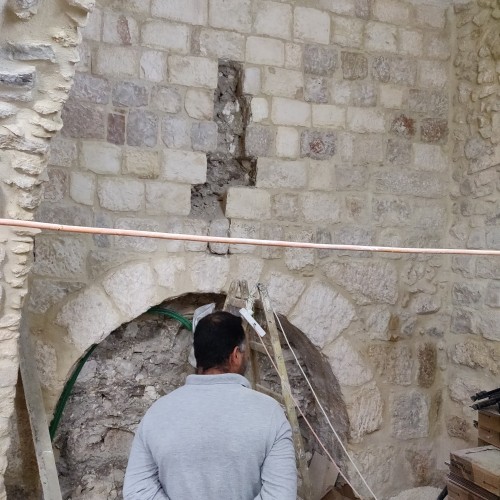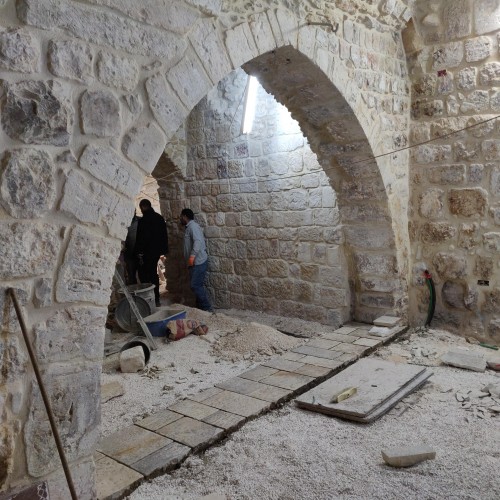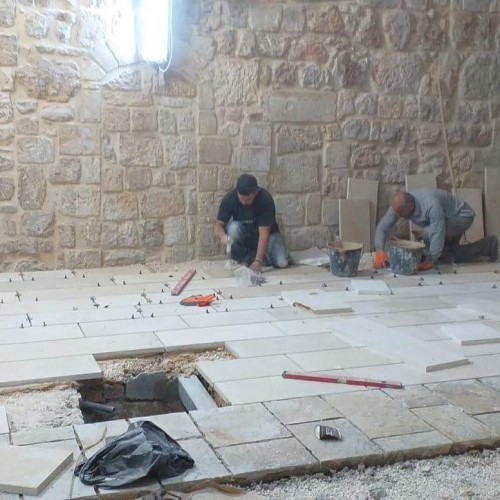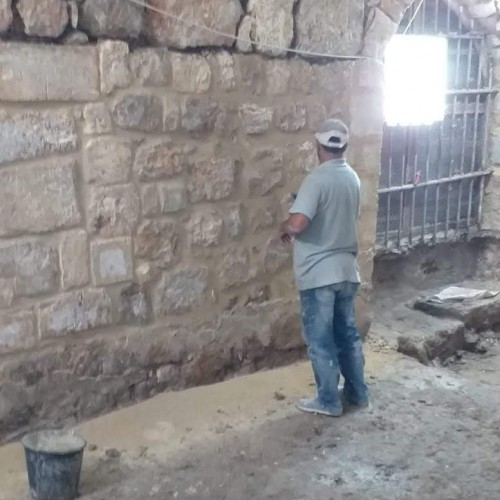Witnesses of faith re-emerge from the past in the future shop of the Terra Sancta Museum
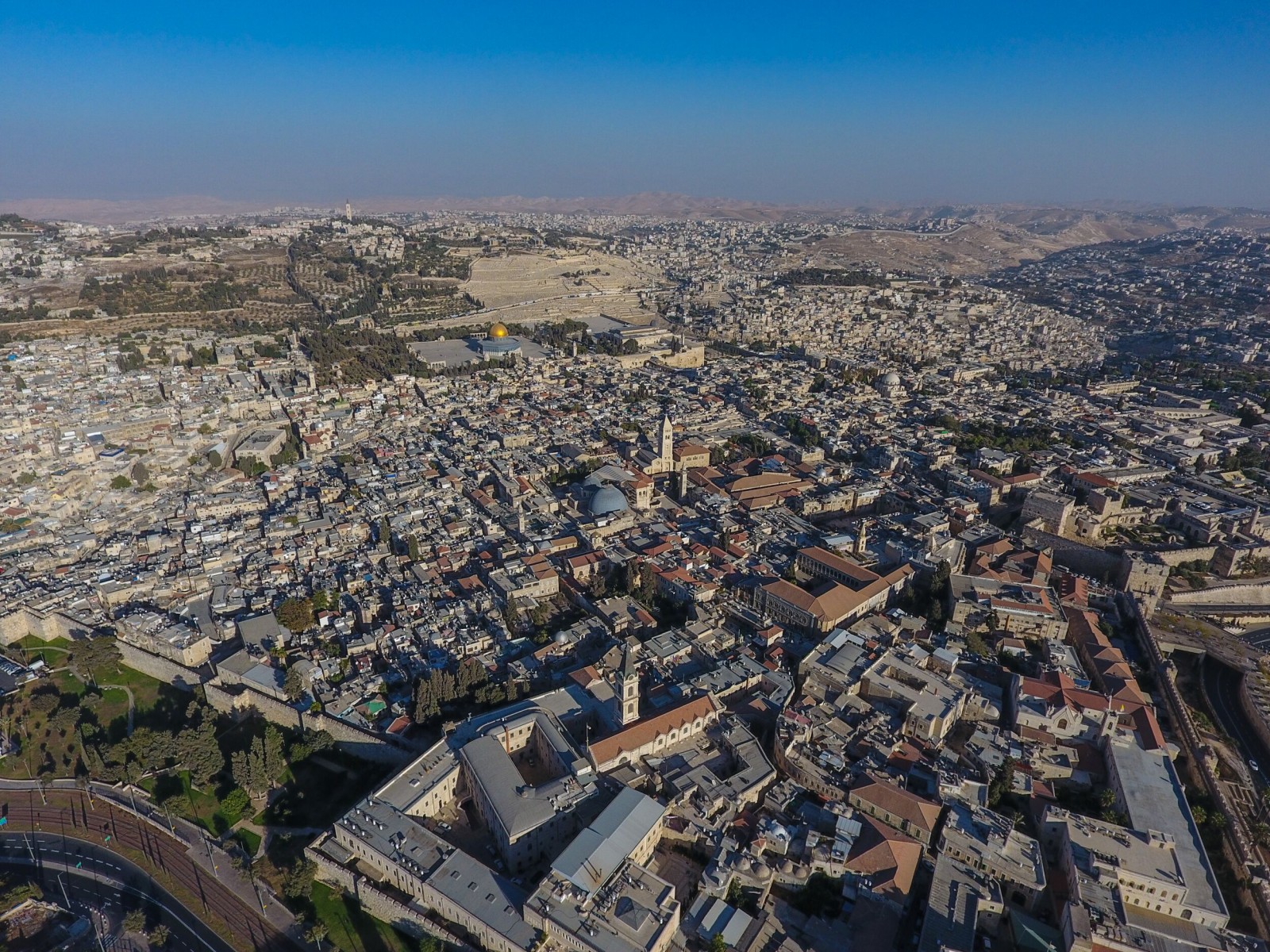
[es]Una vista aérea de la ciudad vieja de Jerusalén. Abajo se encuentra el gran convento de San Salvador, junto a la Puerta Nueva.[/es][fr]Une vue aérienne de la vieille ville de Jérusalem. Ci-dessous se trouve le grand couvent de Saint Sauveur, à côté de la Porte Neuve.[/fr][en]An aerial view of the old city of Jerusalem. Immediately below is the large convent of Saint Saviour, next to the New Gate.[/en][it]Una veduta aerea della città vecchia di Gerusalemme. Subito in basso è visibile il grande convento di San Salvatore, a fianco della porta Nuova.[/it]
On Saint Francis’ road, in the Old City of Jerusalem, descending from New Gate, you will find yourself in front of a great entrance which is placed along an underpass. This is the entrance to Saint Saviour Monastery, headquarter of the Custody of the Holy Land since 1559. At that time, the friars found shelter in a former Gregorian monastery after being exiled from mount Sion by the Turks.
Having crossed the threshold, a babel of courtyards, rooms, and halls, which together create a microcosm surrounded by walls. Once, in these spaces, the friars produced everything they needed for everyday life and prayer: wine for the holy mass, books for the daily study, and cold cuts for the meals.
Saint Savior was the gateway to the East for those coming from the West: many pilgrims, in fact, found generous hospitality within the walls of the Franciscan monastery.
Saint Savior’s walls still bear witness to the passage of these people, driven by their faith to undertake the real “journey of hope”. In fact, on the walls of the future Terra Sancta Museum shop, inscriptions bearing the names of pilgrims have been brought to light. A project for the redeployment and redevelopment of these spaces, first used as warehouses, focuses on the enhancement of the original stone. For this reason, after having scraped the mortar out, the walls have been stabilized with a lime mortar mixture.
The name “MICHAEL” is engraved on the room’s central arch. On the back wall, a name difficult to interpret is followed by the epithet ANGVS “English”. A large number of pilgrims came from England to Jerusalem. They were hosted in the monastery, even after the secession of that church. On the left side of a window, the words “IOANES HERZOG VON MVNSTER” are engraved. According to Eugenio Alliata ofm, executive director of the Terra Sancta Museum, this pilgrim departed from Münster for the Holy Land. He came to Jerusalem with three men; safe and sound they were probably hosted in the Saint Savior’s guestrooms. Perhaps, in a moment of euphoria due to their arrival in the Holy city, Joannes engraved with a knife his name into the stone. The great two-edged cross, which indicates the date next to the name, appears as a proof of the pilgrim’s fiery spirit. Joannes did not return to his hometown. In the biography of one of his traveling companions – probably the most authoritative – is narrated that during the sea crossing back to Europe, the pilgrims’ ship was set upon by corsairs. The protagonist of the biography died at sea together with Joannes Herzog. His name has been handed down thanks to this account and will remain engraved on the wall of the Terra Sancta Museum shop, which has preserved it for more than 300 years.
The practice of carving pilgrims’ own names once arrived in the Holy Land was probably a tradition. The Terra Sancta Museum will display the ancient front door – which gave access to Saint Savior’s guestrooms – in the section dedicated to the first pilgrimages. The door dates back to the 17th century and is carved in wood on several spots with inscriptions and names. John Hyde (1865 – 1912), a well-known American preacher, left his name under the handle, as well.
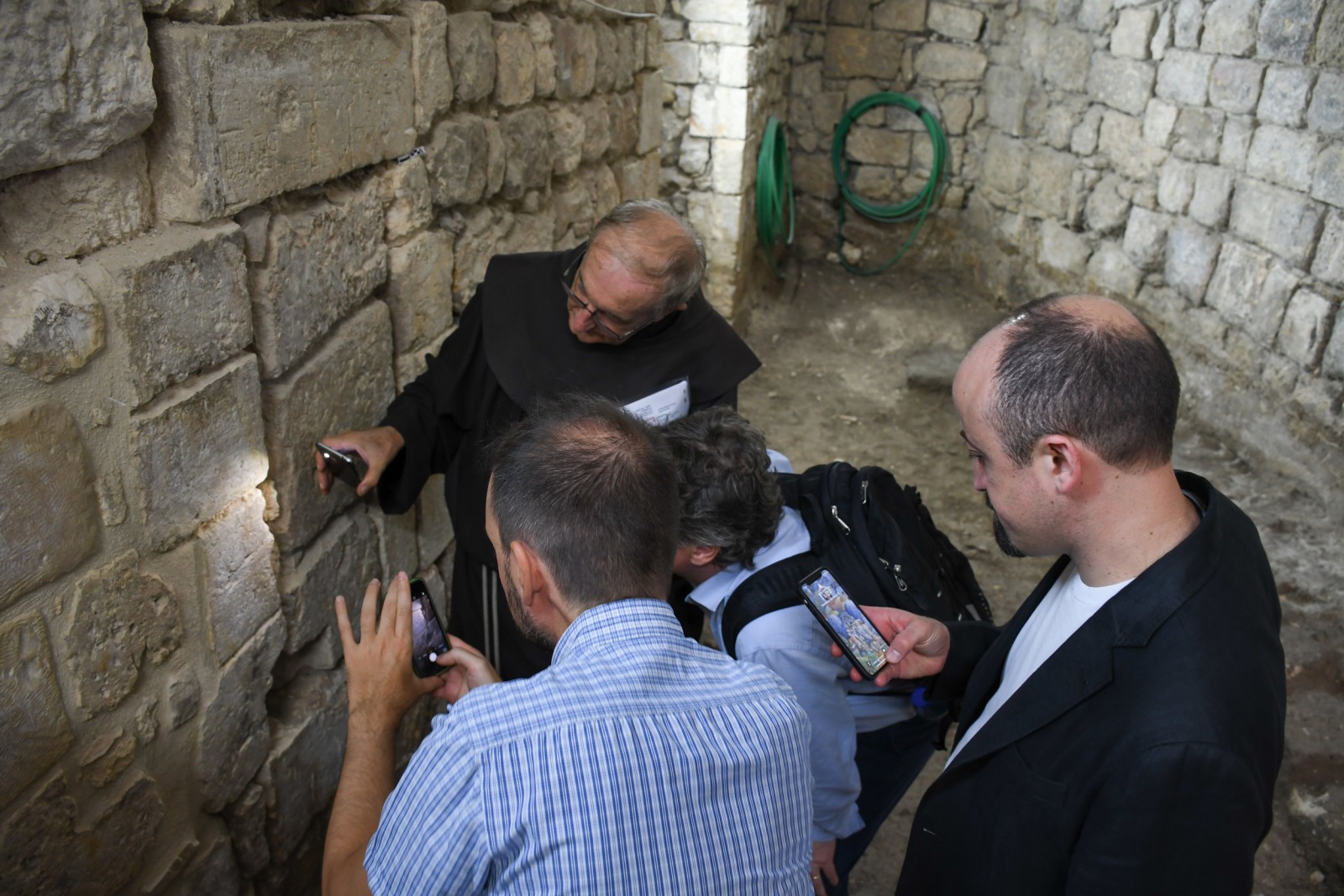
[it]Padre Eugenio Alliata, direttore del Terra Sancta Museum, mostra ad alcuni membri del comitato scientifico del museo le iscrizioni scoperte.[/it][es]El Padre Eugenio Alliata, director del Terra Sancta Museum, muestra a algunos miembros del comité científico del museo las inscripciones descubiertas.[/es][fr]Le Père Eugenio Alliata, directeur du Terra Sancta Museum, montre à quelques membres du comité scientifique du musée les inscriptions découvertes.[/fr][en]Father Eugenio Alliata, director of the Terra Sancta Museum, shows the inscriptions to some members of the scientific committee of the museum.[/en]
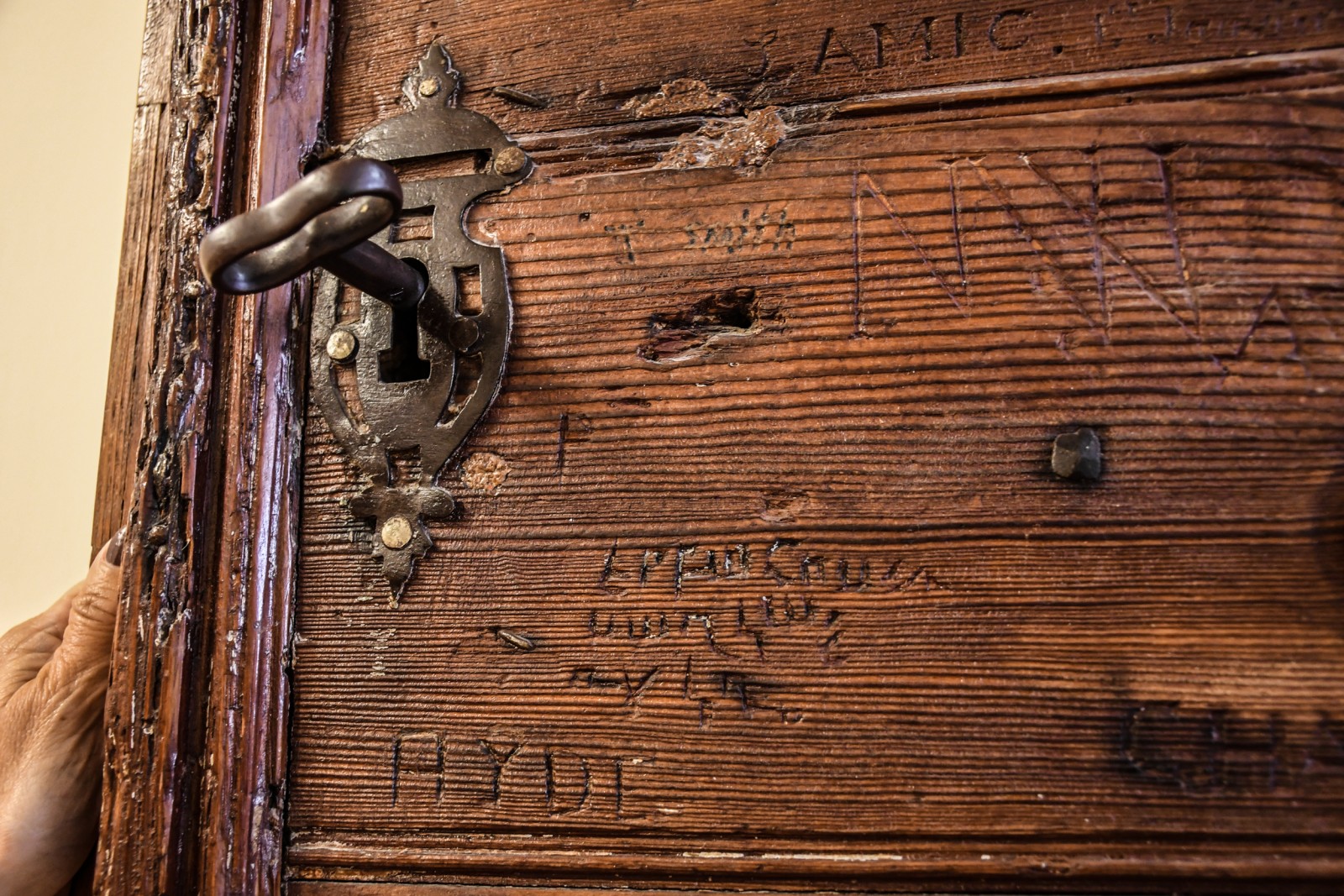
[es]la antigua puerta de la casa de huéspedes del convento de San Salvador con el nombre “HYDE” visible bajo la manilla[/es][fr]L’ancienne porte de la maison d’hôtes du couvent de Saint-Sauveur avec le nom “HYDE” visible sous la poignée.[/fr][en]The ancient door of the guesthouse of St. Saviour convent with the name “HYDE” visible under the handle.[/en][it]L’antica porta della foresteria del convento di San Salvatore con il nome “HYDE” visibile sotto la maniglia[/it]
The opening of the Terra Sancta Museum will be an opportunity for the visitors to rediscover Saint Savior’s monastery, which will become, once again, the point of entry to the Eastern holy places.
Browse the gallery to see the evolution of the works of the future shop!

